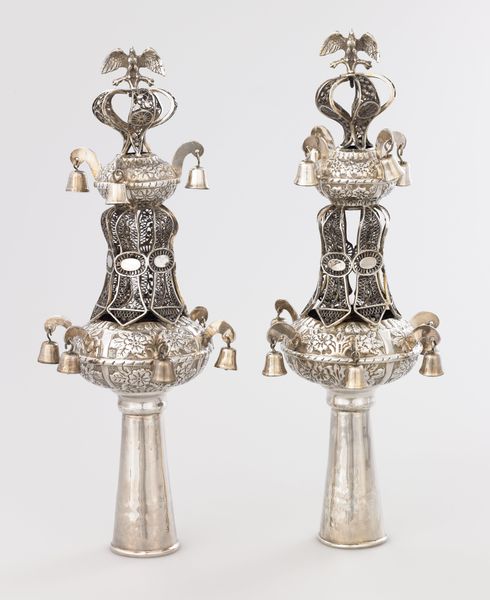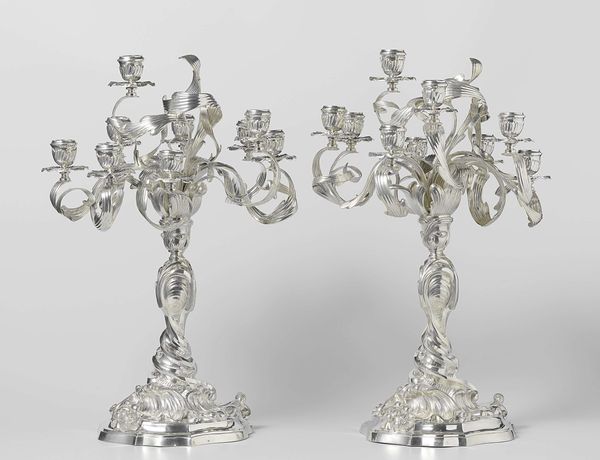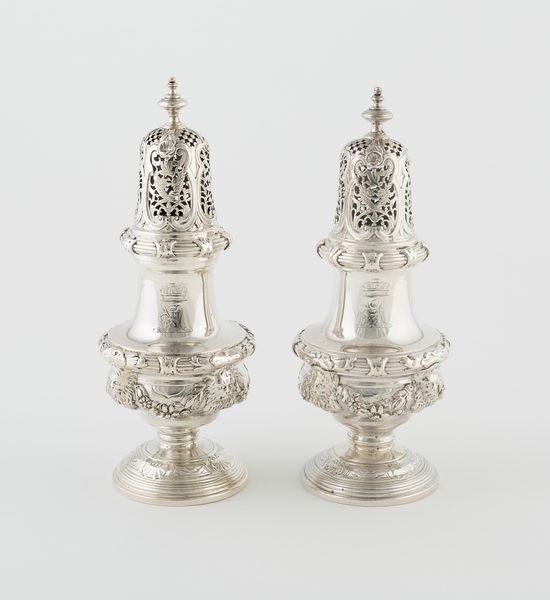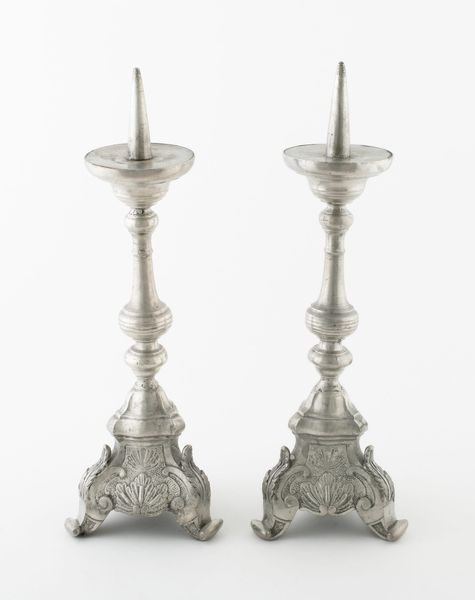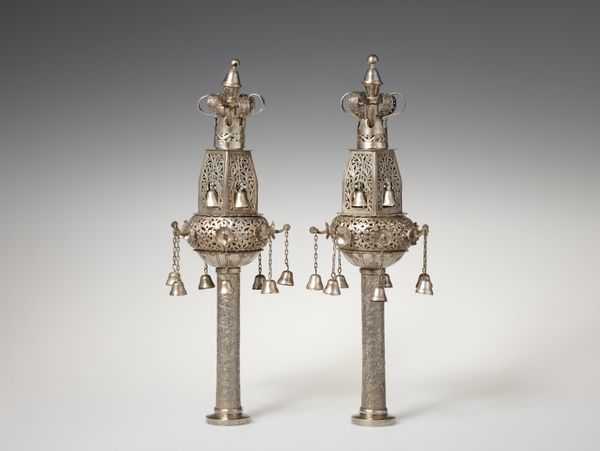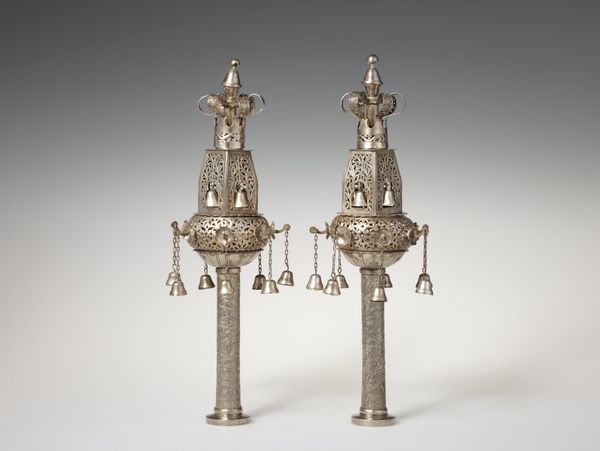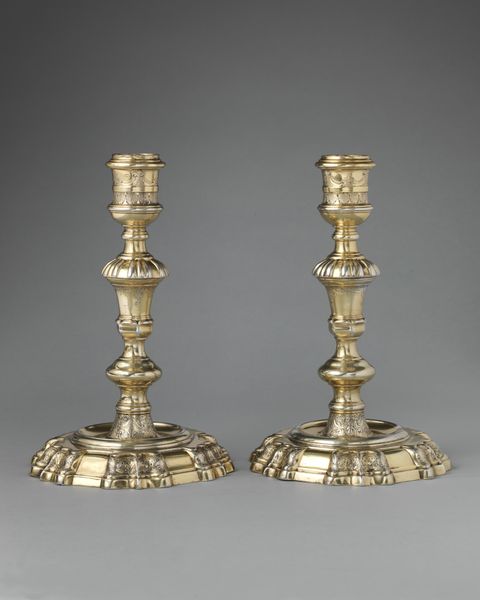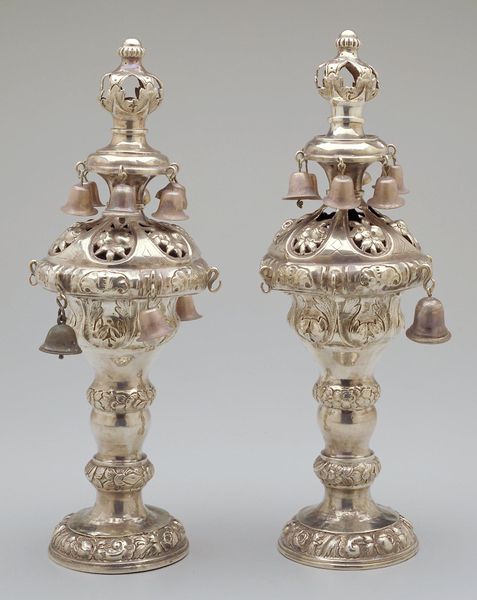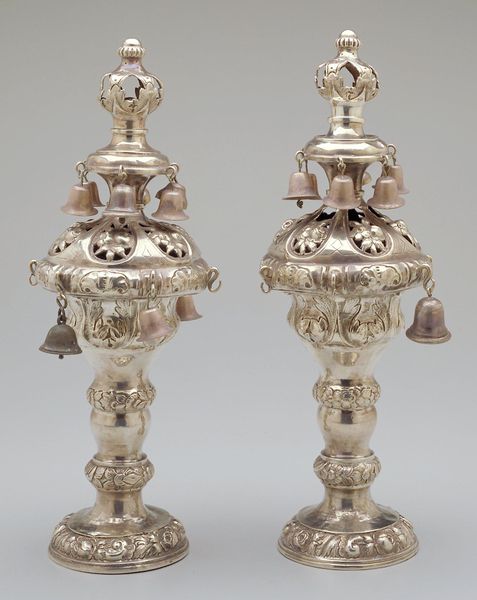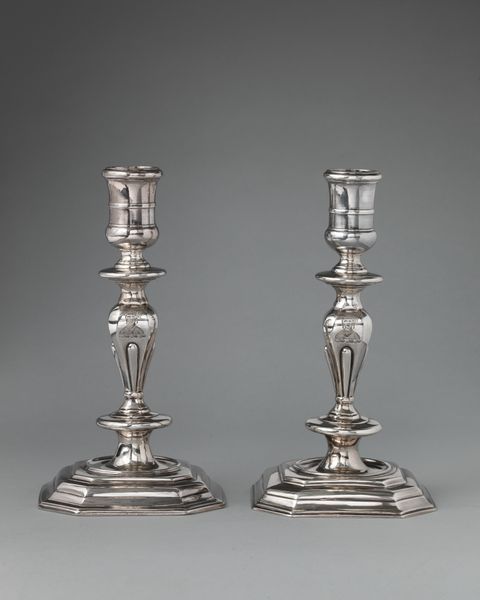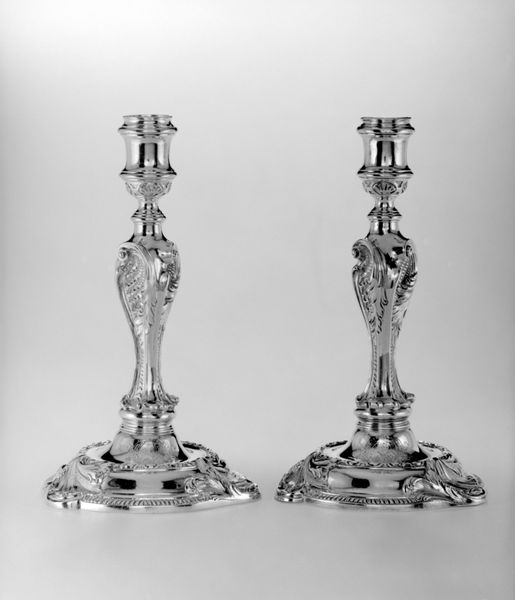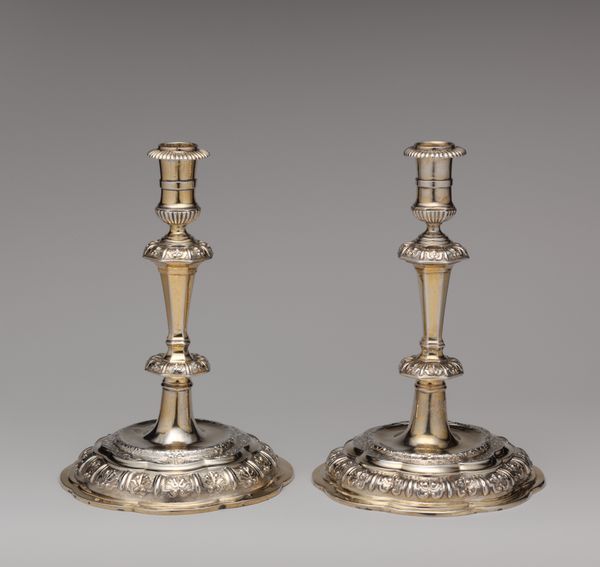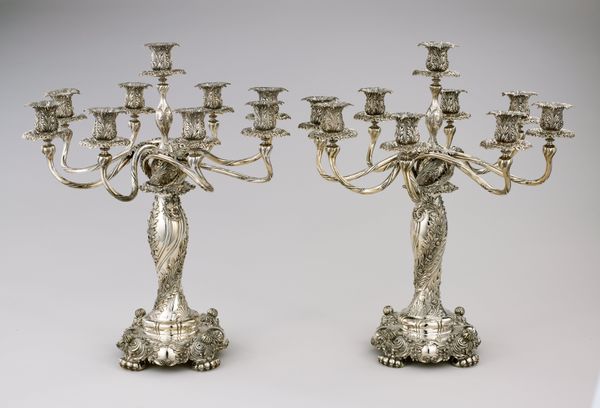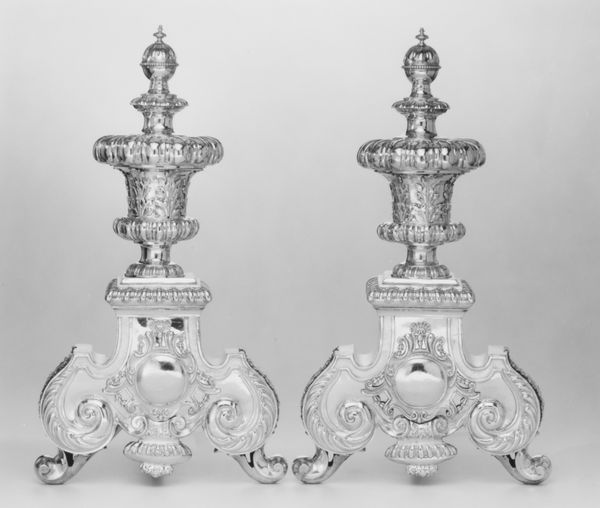
Rimmonim (Torah finials) (one of a pair) c. early 20th century
0:00
0:00
silver, metal, sculpture
#
medieval
#
silver
#
metal
#
sculpture
#
sculpture
#
decorative-art
Dimensions: 15-1/2 x 5 x 6-3/4 in. (39.4 x 12.7 x 17.1 cm)
Copyright: Public Domain
Curator: What strikes me immediately is the joyous detail, a cascade of ornamentation, the tiny silver bells like frozen raindrops! Editor: Well, let me introduce you to these delightful objects. They are a pair of Rimmonim, Torah finials crafted, it is believed, in the early 20th century. Curator: Torah finials? So, they adorn the ends of a Torah scroll? Editor: Precisely! Often crafted from silver or other precious metals, their role is both decorative and symbolic, quite important in the ceremony involving Torah. Curator: It’s funny, they seem so deliberately ornate, and there's this fascinating tension, between opulence and sacred meaning. Editor: They represent not just the importance of the Torah, but also the community's reverence. Notice how the decorative crown tops each finial? A symbolic connection to royalty, reflecting the divine law, the Torah. The proliferation of decorative art is often used for objects intended for churches, cathedrals and synagogues. Curator: It does make me think of cathedrals with the way light would reflect off the silver and bells—I wonder, is the material here silver? How does that inform the piece and its perception? Editor: Yes, it’s silver. Its reflectivity adds a certain ethereal quality and serves, historically, as a signifier of wealth and prestige. That the bells here have no clappers is a fascinating move to me. In general, bells are used for celebration—for holidays, births and weddings. But in their omission, these Rimmonim create silence in preparation for a solemn religious practice, which really affects my reading of it. What do you think? Curator: I love that you bring that up. And considering our fraught, shared histories with these kind of ornate religious displays, how fascinating that something like the absence of noise, or music, still resonates profoundly. Editor: Absolutely. Considering this specific pair is currently housed at the Minneapolis Institute of Art, I’d be very interested in further researching provenance information. Understanding where these pieces were produced and for whom would only enrich my perspective. Curator: Agreed. I walk away really contemplating both the aesthetic purpose and deep devotion that crafted these Rimmonim. Editor: And I feel reminded that even in silence, art can still be remarkably sonorous, as we each approach it from such different and fascinating angles.
Comments
No comments
Be the first to comment and join the conversation on the ultimate creative platform.
